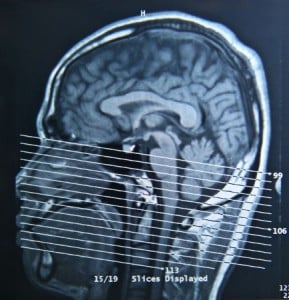When you are injured in a car accident, your medical bills will undoubtedly inconvenience you at the least and could possibly be financially damaging to you and your family. Most people rely upon the insurance settlement to help them pay for their medical expenses.
An important thing to realize is that the insurance company only offers the minimum amount to get an injured accident victim to settle. They try to pay as little as possible, so they can still profit as a business. You need compensation for all of your losses as related to the accident, but these losses will be more than the insurance company is willing to pay.
Because of this huge gap between what you deserve for your damages and the insurance company’s likely offer, it is best to have an aggressive Phoenix car accident lawyer on your side. The law firm of Hirsch & Lyon Accident Law will fight to gain the highest possible settlement for your injuries.
Statistics of Medical Bills After an Auto Accident
The Insurance Research Council (IRC) conducted a study called the Auto Injury Insurance Claims Study. The resulting report reflects that medical expenses after auto accident injury are increasing more rapidly than the rate of inflation. From 2007 to 2012, expenses for medical care, lost wages and other injury-related out-of-pocket costs grew eight percent among those paid through personal injury protection claims. There was a four percent increase in bodily injury claimant payouts.
ISO, a Verisk Analytics organization, reported that in 2013 auto liability claims for bodily injury averaged $15,443 per injured accident victim. Private insurance companies typically cover only about 50 percent of medical and property damage costs from accidents, according to the National Highway Traffic Safety Administration. This means that the injured victims of car accidents are left holding big bills for medical and property damage expenses, if they do not utilize the services of an experienced lawyer to help them gain the compensation needed for their accident-related costs.
Receiving Compensation for Medical Bills Following an Auto Accident
Regardless of the type of accident, an individual person or an entity are always at fault when vehicles collide. Many single-car accidents are not the fault of the driver, instead being due to faulty mechanisms of the vehicle or traffic signals, as examples.
Clear evidence of negligence leads to the ability to gain compensation for injuries and damages suffered due to a car accident, including medical bills, lost wages, pain and suffering and property damage. When a legal claim is established for compensation after an accident caused by a negligent party, the claim includes reimbursement for all of these expenses from the time of the accident to present day, as well as into the future for some costs.
Medical bills covered when such a claim is settled or won include expenses arising from treatment methods, ambulance transportation, hospital and clinical expenses, lab tests, X-rays, MRIs, CT scans, assistive devices, medical providers, prescriptions and other costs. Any expenses related to your treatment and recovery will be written into the claim. The total claim amount may also include a valuation of pain, suffering and emotional distress.
Is there a legal claim for medical expenses?
Regardless of fault when you are involved in a car accident, your insurance company is the first entity that holds responsibility for medical expenses. This coverage is to the extent of their policy limitations.
For a legal claim to be warranted, injuries to an individual, property damage or death must have occurred as a result of the accident. For medical expenses to be paid through a legal claim, there are three primary criteria that must be met. Those criteria are:
- Another driver caused the accident through recklessness or deliberate actions
- The victim suffered injury or death as a result of the accident
- The injuries caused financial damages
When these three criteria are met and a legal claim is initiated by an accident attorney for the client, negligence of the other party or parties must be proven. To prove negligence, there are several sources of evidence. These include, but are not limited to:
- Police reports
- Witness statements
- Accident scene photographs
- Vehicle damage photographs
- Expert witness assessments of the accident
- Proof of the other driver being under the influence of alcohol or drugs
- Other types of evidence
A medical expense legal claim after an auto accident may include medical bills, lost compensation from work, caregivers required in the home due to your injuries and other costs. In Arizona, there is also no limitation on the amount that victims can receive for pain and suffering. Covered medical bills, other expenses, lost wages and pain and suffering may be for present costs, costs from the time of the accident and into the future.
When the negligent party does not have insurance as required by law, criminal charges can be brought. Civil charges are also frequently produced to gain compensation for the injuries, damages and expenses they caused.
Common Types of Auto Accidents Leading to Medical Expenses
Accidents can happen anywhere, anytime and in a multitude of ways. There are some common types of auto accidents and each provides its own set of potential injuries frequently experienced by accident victims. The most frequently seen types of accidents and their common injuries include:
Rollover Car Accidents
The National Automotive Sampling System Database provides data reflecting that during a rollover accident injuries typically affect five main areas of the body: head and neck, chest and upper back, abdomen, arms, and legs. In rollover accidents, most victims have multiple injuries in these areas. The head and neck are the most heavily damaged region of the body for these accidents, with the following results:
- Traumatic brain injury
- Spinal cord injury
- Lacerations
- Broken bones
- Contusions
- Scrapes
These injuries carry additional repercussions, including:
- Speech impairment
- Vision loss or blindness
- Memory loss
- Loss of emotional control
- Hearing loss
- Loss of teeth or dental injuries
- Arm or leg amputation
- Chronic back problems and pain
- Internal organ, nerve and vascular damage
Rear-End Accident
When vehicles, motorcycles or even bicycles are rear-ended in traffic, the following injuries typically result:
- Broken or crushed facial bones
- Broken jaw
- Traumatic brain injury (TBI)
- Dental injuries or loss of teeth
- Whiplash
- Other neck injuries
- Back injuries
- Broken bones
- Crushed arms and legs
- Internal organ damage
- Internal bleeding
- Contusions
- Road rash and burns
- Spinal cord injury (SCI)
These injuries often result in very high medical bills. Required services often include:
- Emergency trauma care
- Hospital stays
- Medical equipment use
- Surgeries, often multiple
- Medications
- Home nursing support
- Long-term assisted living
- Rehabilitation
- Other treatments
T-bone (Broadside)
During T-bone accidents also known as broadside accidents, vehicles are often impacted by a first vehicle, then knocked into a second impact with another vehicle. Often, these broadside wrecks cause one or more cars to be knocked into oncoming traffic, stationary objects or even pedestrians.
Traumas often result from each impact separately and as compounded injuries. Once T-boned, a car can easily rollover, be involved in a separate head-on collision or spin out of control. Passengers are often partially or fully ejected from their vehicle in these accidents. All of the injuries seen in other types of accidents can be part of a long list of injuries suffered by broadside collision victims.
Head-On Collision
Known for the sheer violence and catastrophic results such an accident brings, head-on collisions are feared by most drivers. This is with good reason. Although these types of wrecks only account for about two percent of all auto accidents, 18 percent of all fatal wrecks not occurring at intersections are head-on collisions.
People involved in head-on collisions suffer a high-speed jolt of stopping due to the impact with another vehicle, then the immediate jarring backwards that increases the significance of their injuries.
Injuries suffered in these wrecks largely depend upon the vehicle’s safety devices and which ones are in use at the time of the collision. When fatality does not occur, the following injuries are common:
- Concussions
- Head trauma, including traumatic brain injury
- Lacerations
- Fractured bones
- Contusions
- Whiplash
- Neck trauma
- Back trauma
- Dental injuries
- Internal organ damage
- Internal bleeding
- Airbag-related injuries
Pedestrian
Pedestrians hit by a car are also particularly catastrophic. The average vehicle weighs over 3,000 pounds. When this weight impacts the unprotected human body, little can be done to prevent disastrous results.
Over 69,000 American pedestrians are injured each year and over 4,000 are killed by motor vehicle operators, according to the U.S. Centers for Disease Control. This is one pedestrian injured every eight minutes. About 40 percent of the deaths are children.
When a pedestrian is hit by a car, there are two sets of injuries incurred. The first set are caused by the impact from the vehicle, itself. The second set are derived from impact with the solid object where the pedestrian lands. That second set may be from hitting the ground, being thrown into a telephone pole, being knocked into a wall or hitting other cars, as examples.
The most common injuries seen in pedestrian accidents include:
- Scalp lacerations
- Body lacerations
- Concussions
- Traumatic brain injury
- Hemorrhages
- Hematomas
- Contusions
- Abrasions
- Spinal cord injury
- Torn and sprained ligaments
- Bone fractures
- Dental injuries
Getting the Help You Need for Accident Related Medical Bills
When you are injured in an auto accident, you need experienced legal help in dealing with insurance companies and negligent parties. Hirsch & Lyon Accident Law today for a free, no obligation consultation at (602) 535-1900 to discuss your case with an attorney who can ensure you get the compensation you deserve.

